A few years ago, I discovered an alien flower in a wilder corner of my garden. It had incredibly beautiful purple petals with delicate light purple tentacle-like filaments surrounding a substantial stamen. It looked like a life form that would be more at home in the ocean than a woodland garden. I protected it, and as the vine grew and climbed, it rewarded me with more flowers, and later a soft green fruit. It was my first encounter with Passiflora Incarnata or the purple passionflower. I collected the fruit and deposited it in other areas I wanted to see it grow.
“Well, I must endure the presence of a few caterpillars if I wish to become acquainted with the butterflies.” Antoine De Saint-Exupery
The next year, the passion vine grew and quickly filled and then overtook the area I had designated for it. I noticed that there were bright orange caterpillars with black spikes climbing all over the vine and munching holes the leaves. A quick search revealed that these spiky ravenous little guys would eventually become beautiful Gulf fritillary butterflies. Now I had another reason to love the passionflower vine. Little chrysalises started popping up all over the deck, and occasionally I’d catch the caterpillar hanging still, starting the process by fashioning a silken pad to attach its tail to a sturdy structure, forming the J shape it assumes before shedding its skin to form the chrysalis.
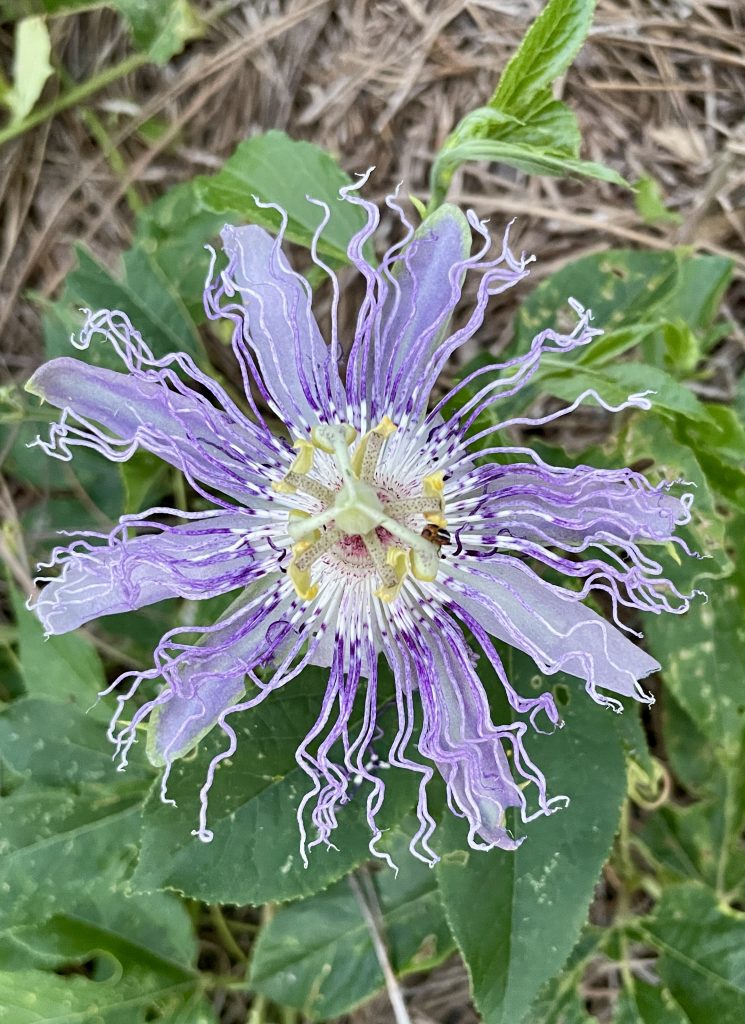
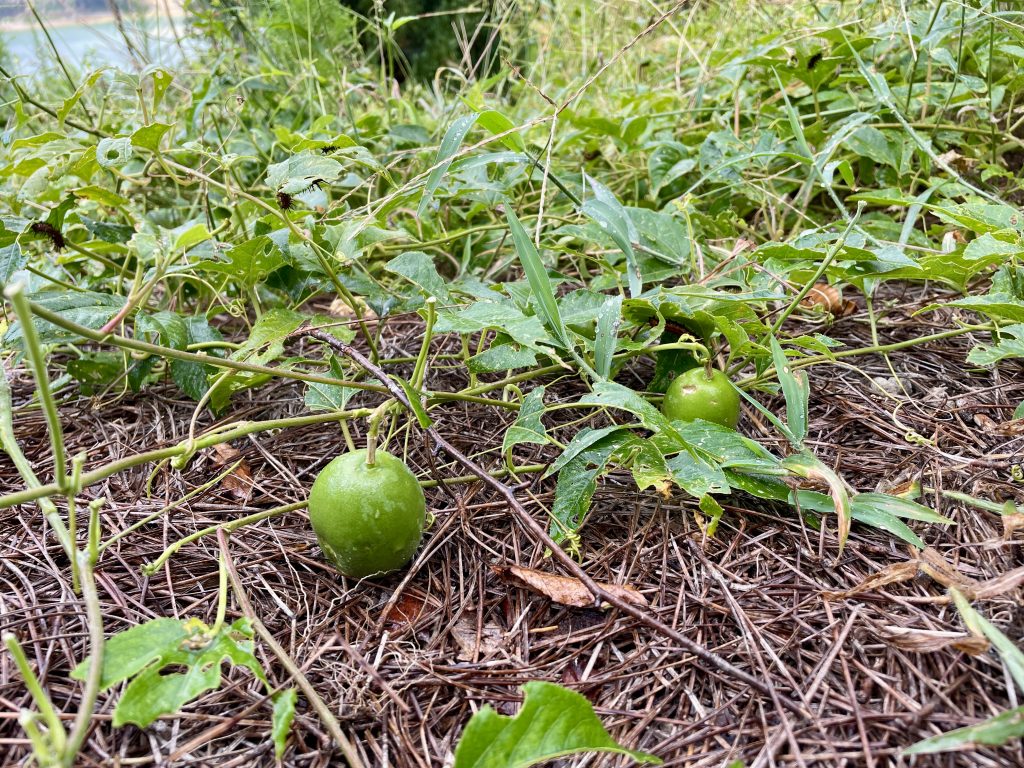
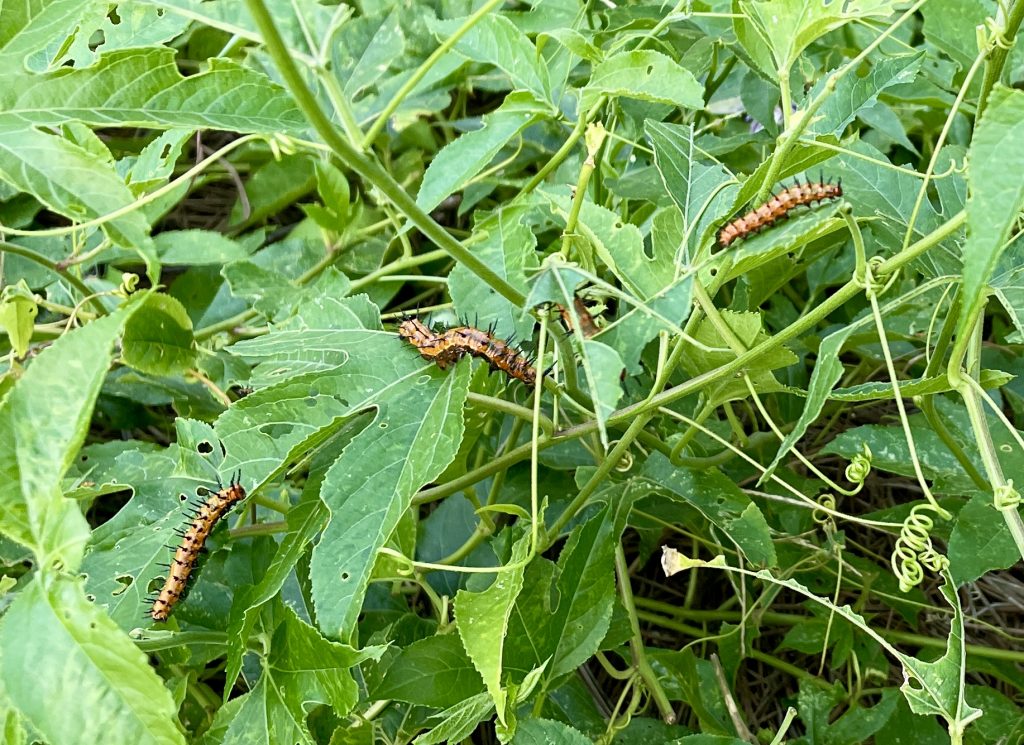
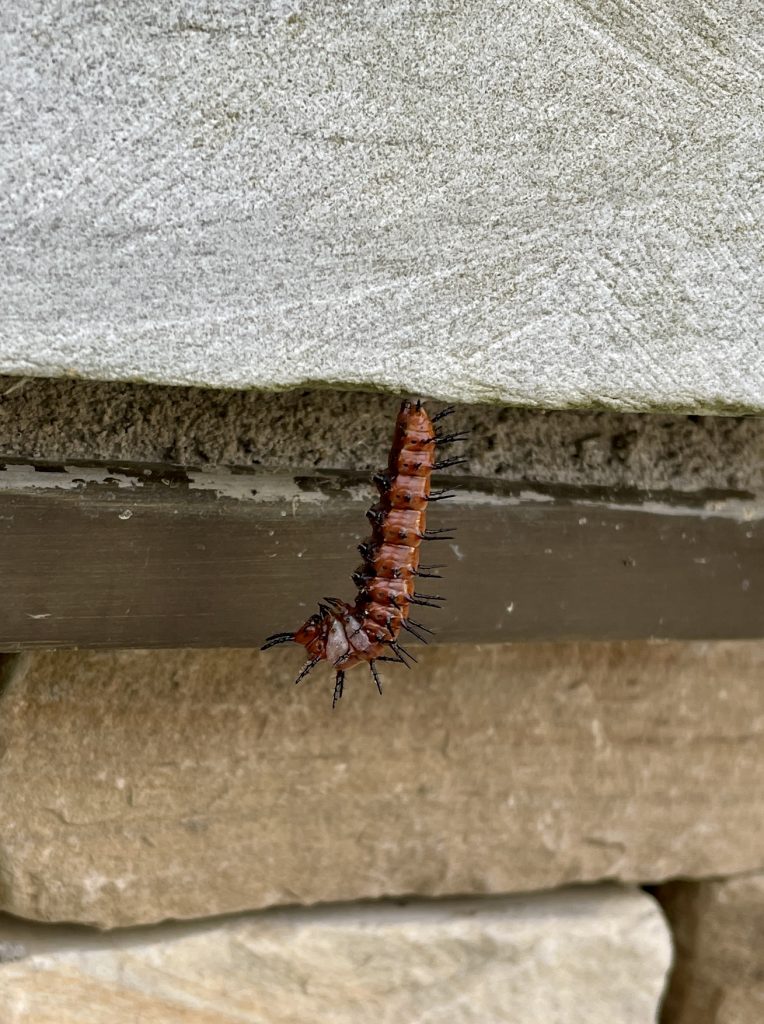
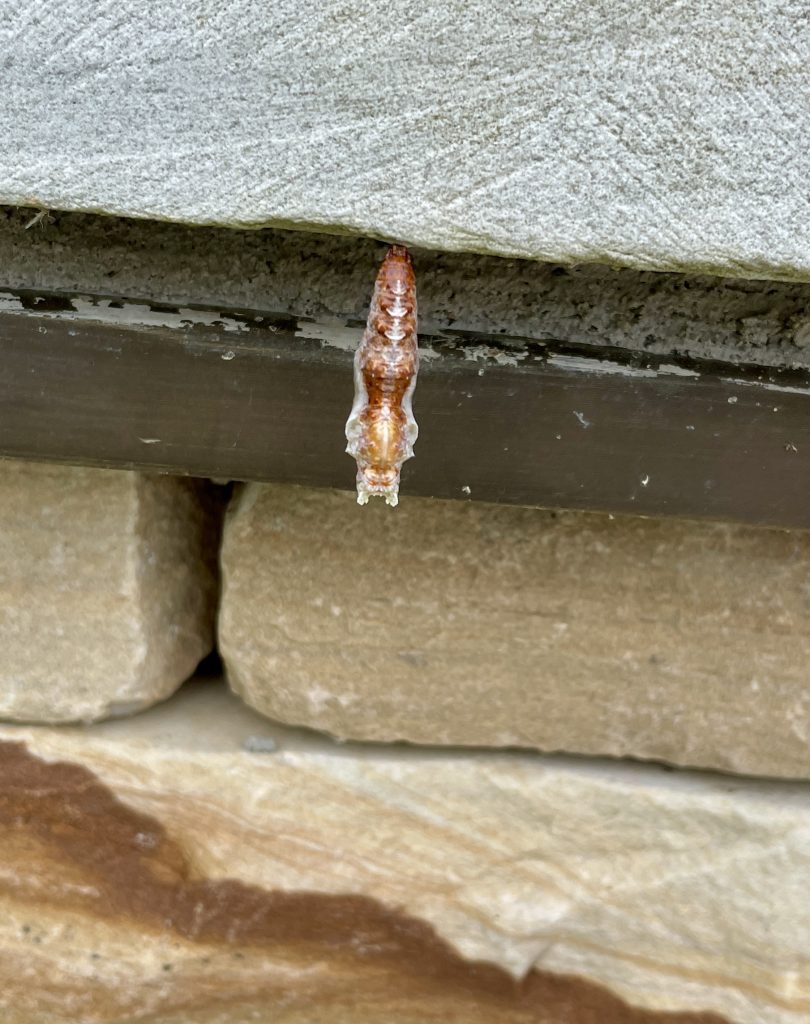
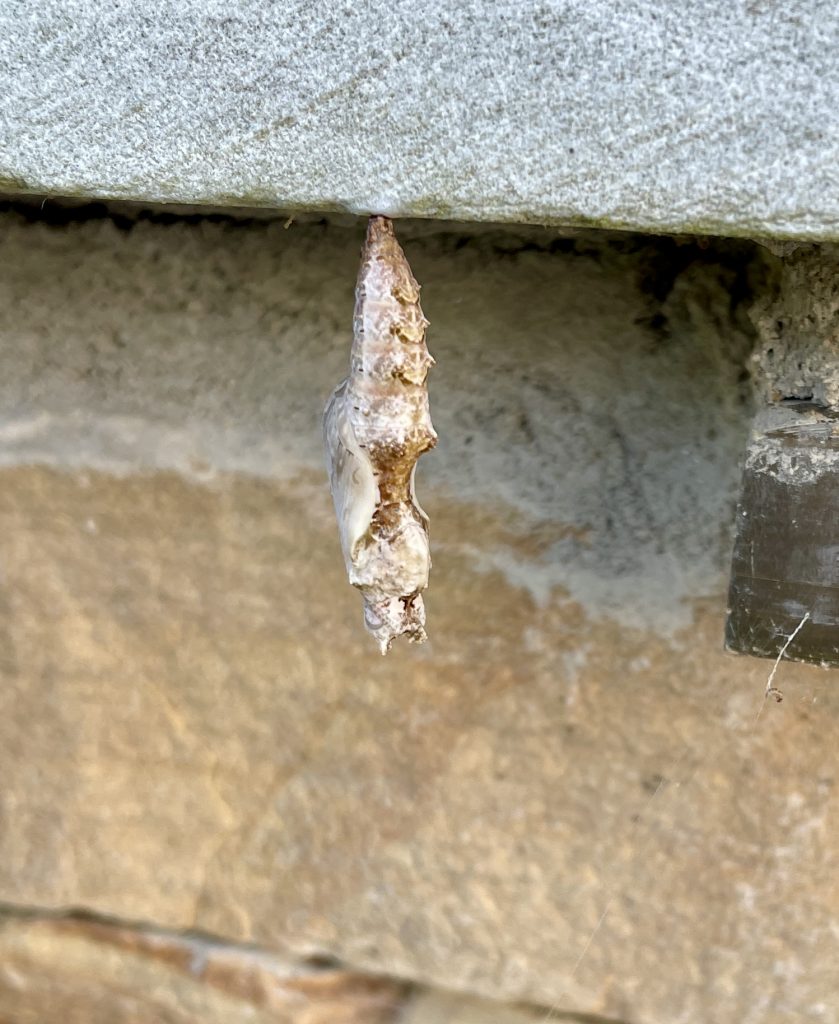
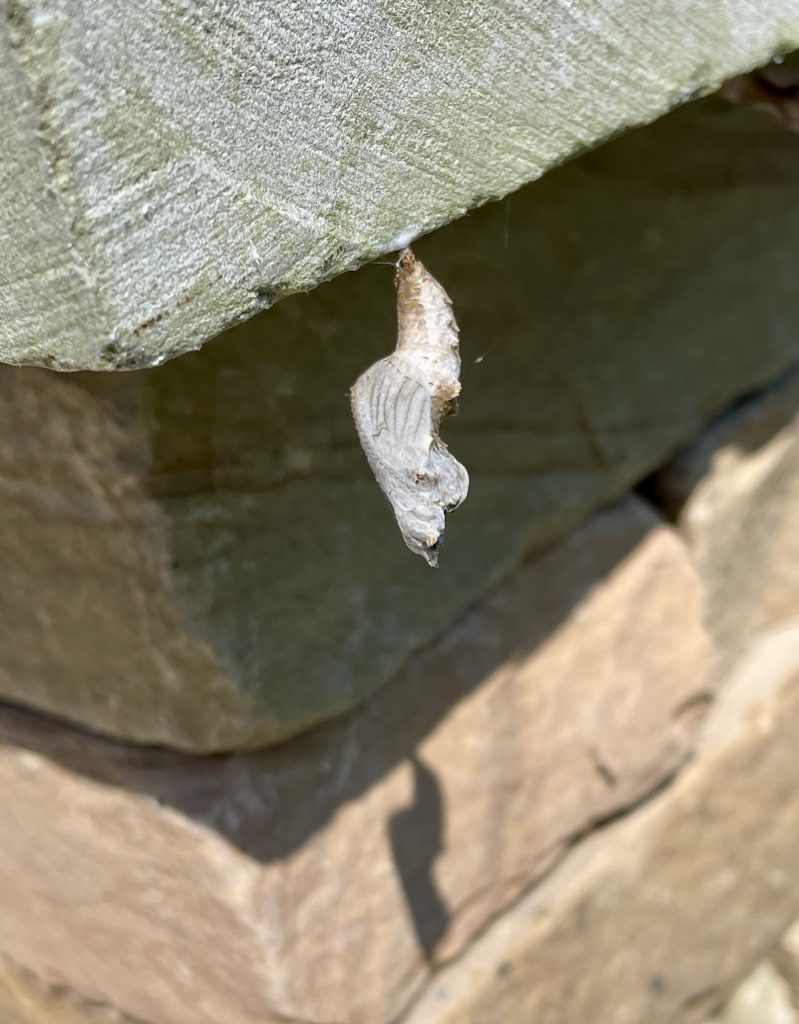
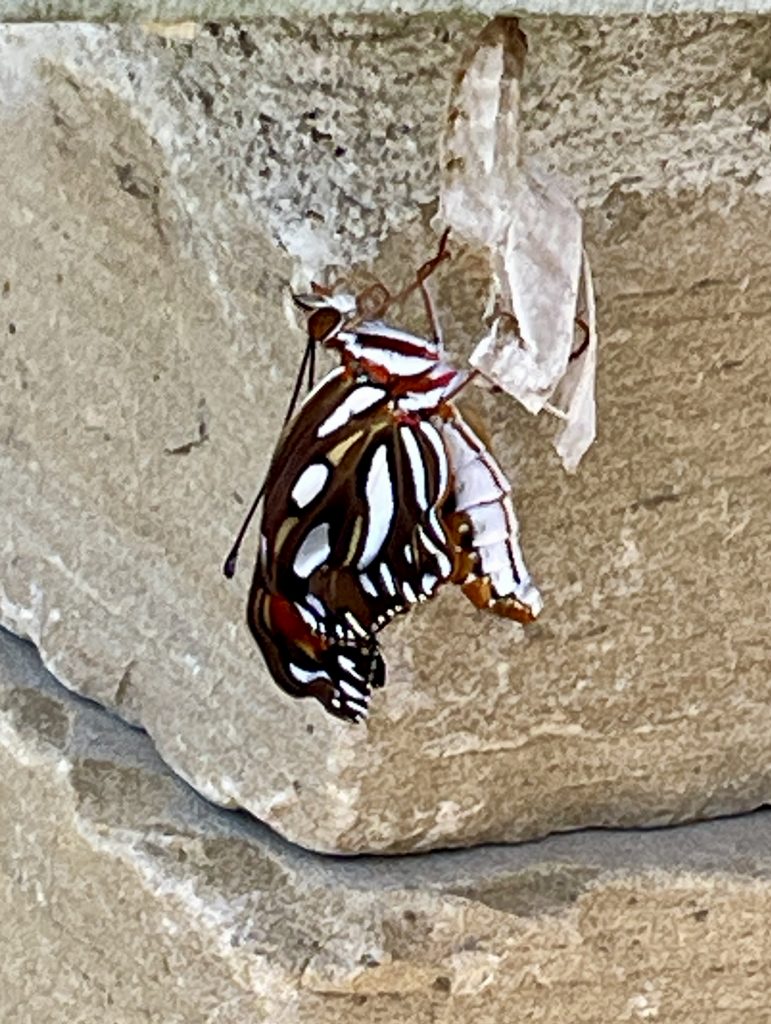
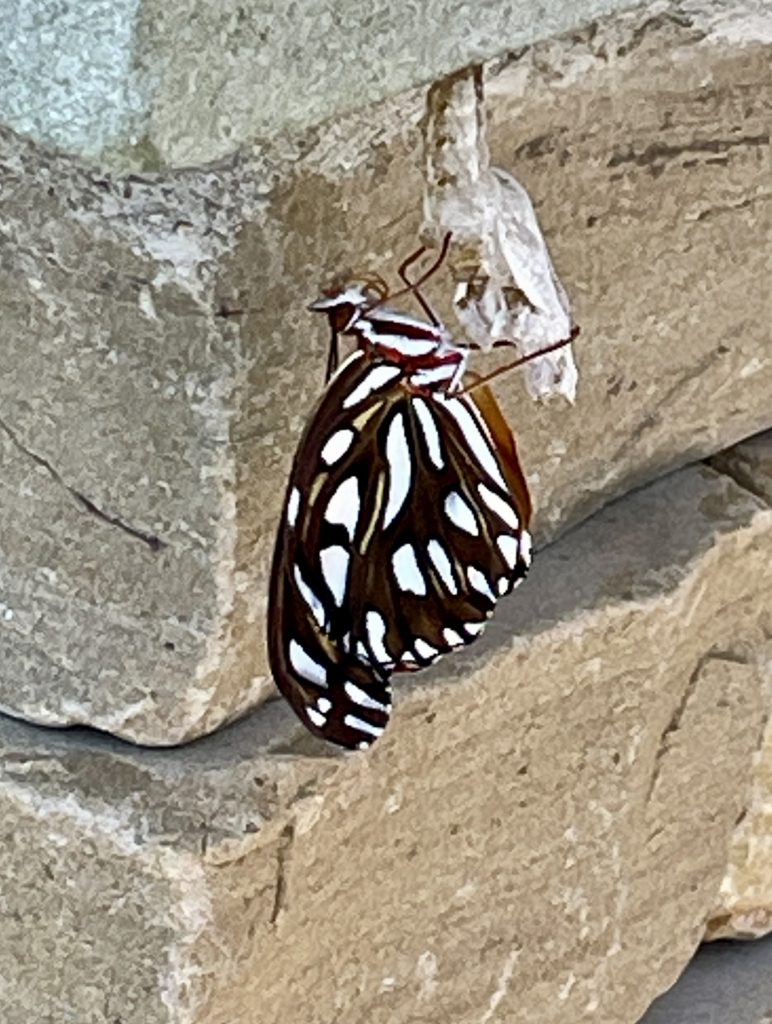
Emerging as Butterflies
It took a while for me to catch one of the chrysalises getting close to opening, but I noticed one with butterfly wing veins barely visible through the thinning casing. By the next morning, the butterfly had emerged and was pumping fluid from its abdomen to expand its crumpled wings. There was only about 30 seconds between the last two pictures above. Only a few hours later, it took flight! I have counted more than 30 chrysalises so far, and the baby caterpillars are still hatching!
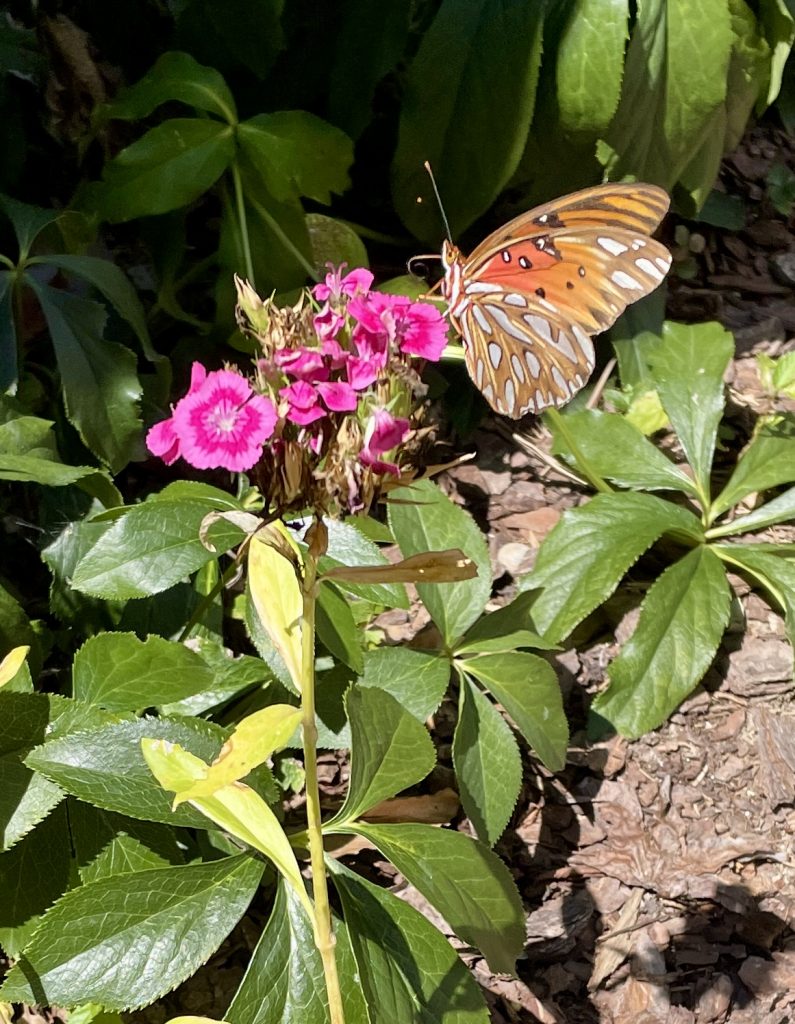
If you plant it, they will come…
I have truly enjoyed witnessing the metamorphosis of these beautiful creatures. If you are interested in creating your own pollinator/butterfly garden, here are some plants to consider adding to your garden:
Milkweed (common milkweed, swamp milkweed, butterfly weed, or showy milkweed) for Monarch butterflies
Passionflower vine for Gulf Fritillary butterflies
Dill, Parsley, and Fennel for Black Swallowtails
Birch trees, magnolia trees, tulip trees, willow trees, ash trees, or cherry trees for Eastern Tiger Swallowtail
Pussytoes and Pearly Everlasting for American Lady and Painted Lady butterflies
Resources used for this post:
https://www.nwf.org/Native-Plant-Habitats/Plant-Native/Why-Native/Milkweed-for-Monarchs
https://www.flawildflowers.org/know-your-native-pollinators-gulf-fritillary
https://www.wildlifewatch.org.uk/what-happens-inside-chrysalis
https://alabama.butterflyatlas.usf.edu/host-and-nectar-plants
